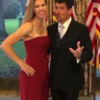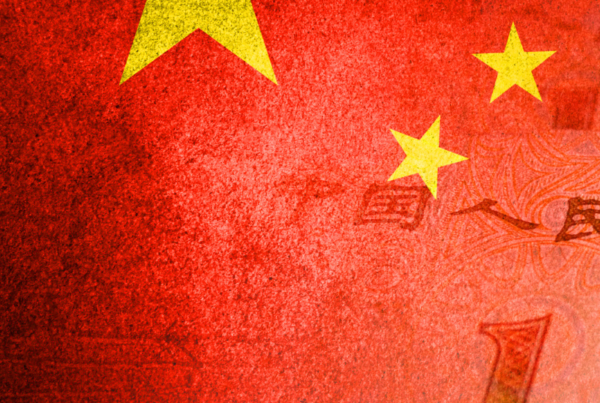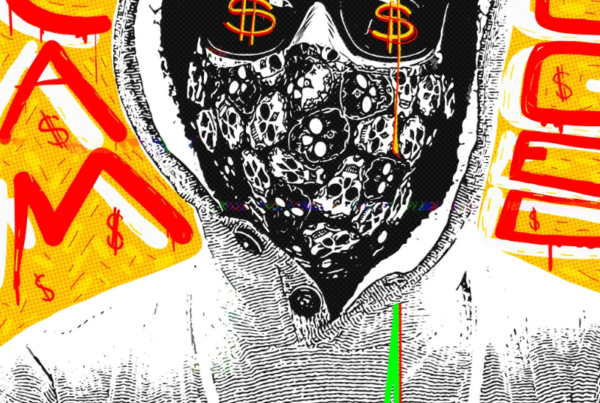KYIV, Ukraine – More than ten months into one of the most talked about – and feared – conflicts of our time, Russia’s invasion of Ukraine grinds on. It was supposed to be a quick victory for Putin. Instead, however, the many tales of tribulations and triumphs over the year show that a resilient Ukraine – outfitted with billions in NATO weaponry – has defended itself and gone on the offensive too.
Still, with a gloomy winter in full force and countless lives lost by the day, will 2023 bring any shimmer of light on the horizon?
“The likelihood of a decisive victory on the part of either of the protagonists looks equally unlikely in 2023,” says John Wood, a longtime Russian, and Middle East defense analyst. “The war in Ukraine has taken on two major debilitating features, sanctions, and the destruction of infrastructure. Both are designed primarily to break the will of the respective people. Unfortunately, this almost always fails to achieve its objectives. Often, it hurts the very people it is meant to help and enriching those it is meant to hurt.”
In other words, the expected collapse of the Russian economy in 2023 is unlikely to materialize, and the EU can expect to pay a heavy price, he continues.
While defense experts anticipate Moscow will continue its onslaught on its neighbor’s terrain – targeting military bases, infrastructure, and the electrical grid – the intensity of the winter months may induce at least a steadying of military progressions on both sides of the trenches.

In November, Moscow announced a surprise retreat from the eastern Ukrainian city of Kherson – the first significant hub it overtook in early March. Experts pinned this to apprehension that its forces would be caged in and severed from strategic supply routes as the winter freeze sets in. The persistent shelling of the liberated city has since persisted, but efforts to resume the incursion are not over.
The winter halt – marked by snow, rain, and soft ground – could last weeks, potentially months. However, without some structured deal, the violence and renewed offensives are likely to churn on come Spring. Moscow officials have repeatedly stated that the “special military operation” would not be over until it has “achieved all objectives laid out in the beginning.”
Yet with each passing day, the chilling death toll climbs higher. Although accurate statistics are hard to determine, the United Nations – the organization that monitors civilian casualties – estimates at least 6,500 civilians have lost their lives. However, the body only counts a death once a name and other details can be confirmed. Ukrainian officials anticipate that more than 40,000 civilians have been killed.
The loss of terrain for Russia and recapture by Ukraine – such as in Kherson – elicits much celebration and coverage. But with that distraction, Moscow maneuvers into other areas. What I saw in late 2022 was a shift to the seemingly insignificant city of Bakhmut. Yet if that focal point is seized by Russian troops, it is a more straightforward assault on the critical hubs of Kramatorsk and Sloviansk.
Nevertheless, Ukrainian officials have made it clear that they are not content in returning their control to pre-2022 invasion levels, but in retaking the Crimean Peninsula and other Donbas areas seized by Russian forces and pro-Russian separatists in early 2014.
This could prove a problem for the United States. In November, chairman of the Joint Chiefs of Staff, Gen. Mark Milley, asserted that the Kyiv government should seek a settlement before the conflict becomes a stalemate like World War I, emphasizing that a winter slowdown would be the opportune time. This ignited quick pushback from the Zelensky administration, and the White House hastily walked the statement back.
Yet the notion of an agreement, and whether Kyiv should have to surrender anything, is a sensitive, albeit vital point to ponder.
“The war has descended into a level of barbarism, which, in terms of scale and depravity, the world has seldom seen since World War Two. The level of hate and mistrust this engenders makes it almost impossible to envisage peace talks, let alone the cessation of fighting, anytime soon,” John Wood continues. “But perhaps the most bewildering aspect of the war is the burgeoning amounts of money and arms being sent to Ukraine.”
Given that the U.S. does not have an official footprint on the ground, it is impossible to know exactly how the arsenals are being used.
“It is not just a question of do we know how much, but do we know where it is going? Can a broken and war-torn economy such as Ukraine, with a long history of corruption, effectively absorb the billions of dollars thrown its way? Moreover, the variety and age of many weapons sent to Ukraine has created a logistical nightmare to get the right munition to the correct weapon at the front,” John stresses.
And while many in the U.S. may feel indifferent to the seemingly distant conflict that does not directly involve American troops, its implications cannot be ignored – from the nuclear threat Putin poses to the hot-button issue of U.S. taxpayer funding.
Financial support – particularly in the way of heavy weaponry – has massed strong bipartisan support in Washington, rebuffed only by a fringe array of outliers who view NATO as agitators or believe the U.S. cannot afford to extend billions to a foreign country in a time of unprecedented inflation, and millions of Americans on the brink of starvation, poverty, and economic collapse.
The U.S. has provided over $15 billion in military assistance since Russia’s invasion in late February, from launch vehicles and missiles to rocket systems, ammunition, and intelligence-sharing platforms. In November, President Biden requested Congress approve a further $37.7 billion in emergency economic and military AID to an embattled Kyiv. However, such a package could take a long time for authorization and deployment.
But as attention fades, the fight to continue the flow of funding could prove challenging for American leaders and lawmakers vying for reelection from disgruntled constituents.
Nevertheless, Ukrainian officials – who consider their unflagging morale their number one weapon – recognize the importance of NATO’s support. According to one well-placed Presidential source, the top need is Abrams tanks to “cut the Russian corridors” and ultimately pen them in, followed by long-range missiles and drones.
Additionally, the energy schism between Russia and a large portion of Europe is likely to deepen in 2023.
Russian oil exports have declined some eighty percent, while gas exports have dropped more than 90 percent, sending heating costs skyrocketing. However, the further threat still looms, as 2023 will signal the first year when gas stocks won’t be replenished with a Russian inventory.
Like the United States, European lawmakers will likely struggle to “sell” support for the war to the millions battling frozen temperatures and soaring electricity bills. Europe’s need to restructure its energy blueprint away from Russian dependence won’t happen overnight. Instead, citizens will pay the highest price for their leadership’s long-running reliance on an unpredictable player.
Yet it is Ukrainians who pay the heaviest price for the winter crisis. More than forty percent of the country’s power grid is decimated. Thus, millions endure rolling blackouts, slated to only worsen well into the new year. The grid has been a choice bull’s eye for Russian forces, and can only get worse, with further damages threatening the fuel materials needed to keep power pumping.
“I think this is going to be a long, drawn-out war. There has to be a Black Swan event to break it. Germany and France are concerned about energy shortages, and Putin appears not in a mood for appeasement or reconciliation,” notes Andy Milburn, founder of the Ukrainian-based humanitarian assistance organization, The Mozart Group (TMG), predicting that the conflict will drag on until at least the eighteen-month mark.
On a broader scale, Russia’s incursion and the surprising strength of Ukrainian counter-defense can shape the way western countries approach modern warfare. In many ways, the traditional battleground is being viewed as a testing ground for future wars, weaponry, and the role of Emerging and disruptive technologies (EDTs). While heavy weapons play a prominent role, Ukraine’s successes have largely relied on the commercial space and configuration of non-state entities to reshape conventional mechanisms and provide an edge in ingenuity.
As the Center for International Governance Innovation (CIGI) points out, the warfighting developments have not necessarily been “flashy technological transformations” but “incremental and focused.”
“Technology is being tweaked to enable greater access to and sharing of information; sensor-based technologies are appearing in a variety of settings, and operational data is being collected and used to train artificial intelligence (AI) systems,” an October report underscores. “Both sides in the Ukraine war can now more effectively monitor events on the ground. What is particularly interesting, however, is that the Ukrainian military is also profiting from technology that connects troops in the war zone to a wider group of technologically savvy individuals. For example, open-source experts and “online volunteers” intercept communications among Russian military units in Ukraine and provide that information to the Ukrainian military.”
Skilled individuals joining battlefields virtually and supporting militaries on the ground will likely become commonplace in future warfare, CIGI writes.
And while much of what has transpired to date has been in Ukraine’s favor, the one wildcard the country play is the nuclear one. The worry has been atop governments’ lists since the full-scale invasion began, with Putin posturing up and down on the matter.
Whether it comes to frightening fruition in 2023 remains to be seen – with unimaginable ramifications.
“The odds are not zero,” surmises Wade Priddy, TMG’s Chief People Officer.
And Igor Novikov, a former top officer to President Zelensky, concurs the worst could be yet to come.
“Putin wants to intimidate and coerce Ukraine and the West into a deal to freeze the conflict until he’s ready to continue, because things aren’t going his way. Militarily, and to do that, he’s resorting to terrorism, plain and simple,” he underscores. “He started hitting civilian infrastructure. His idea is that if Ukraine is dark and cold, he plans to carry out a few more strikes to ensure the energy grid is down for as long as possible, making the situation unbearable for the people. He’ll create a humanitarian catastrophe that would lead to the freeze of the conflict.”
Igor pauses.
“But I don’t think it will work out for him, because Ukraine is incredibly adaptable and resilient. We’ve suffered enough, and we are prepared to suffer more,” he points out. “Especially since, on the battlefront, the tides have slowly turned in our favor.”
Nevertheless, the likes of Wood only see one victor out of this – and it is neither Russia nor Ukraine.
“The only real winner is China. It gets increasingly cheaper Russian oil and gas, while also facing a NATO that is growing weaker by the day, as it supplies Ukraine with the weapons of war, trains its men, and provides it with all manner of intel,” he adds grimly. “In the meantime, China fills the void created by Western companies abandoning the Russian economy, while astutely avoiding re-arming Russia to the full and alienating the West. For Xi, the war in Ukraine is the gift that keeps giving. The West becomes more dependent on what he thinks and says for its survival. But what he thinks and ultimately wants to do is out of sight and out of mind of the almighty G7 leaders, even though it is the annexation of Taiwan by 2027 and world domination by 2050.”











